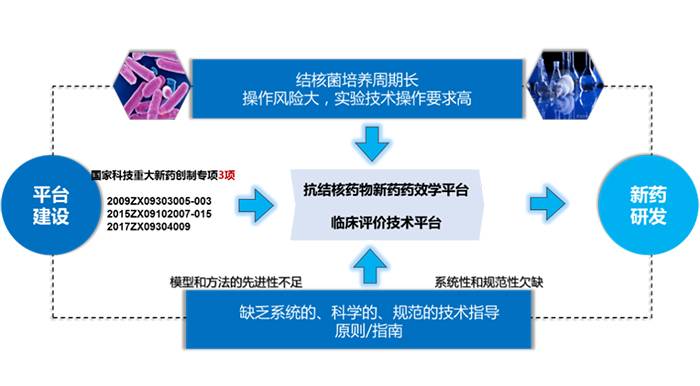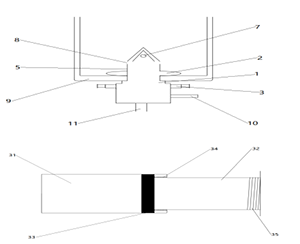2024年
No.11
PubMed
(tuberculosis[Title/Abstract]) OR (lung cancer[Title/Abstract])
Filters applied: from 2024/11/1 - 2024/11/30
1. Cancer Discov. 2024 Nov 1;14(11):2224-2242. doi: 10.1158/2159-8290.CD-24-0519.
Clinical Validation of a Cell-Free DNA Fragmentome Assay for Augmentation of Lung Cancer Early Detection.
Mazzone PJ(1), Bach PB(2), Carey J(2), Schonewolf CA(2), Bognar K(3)
Lung cancer screening via annual low-dose computed tomography has poor adoption. We conducted a prospective case-control study among 958 individuals eligible for lung cancer screening to develop a blood-based lung cancer detection test that when positive is followed by a low-dose computed tomography. Changes in genome-wide cell-free DNA fragmentation profiles (fragmentomes) in peripheral blood reflected genomic and chromatin characteristics of lung cancer. We applied machine learning to fragmentome features to identify individuals who were more or less likely to have lung cancer. We trained the classifier using 576 cases and controls from study samples and validated it in a held-out group of 382 cases and controls. The validation demonstrated high sensitivity for lung cancer and consistency across demographic groups and comorbid conditions. Applying test performance to the screening eligible population in a 5-year model with modest utilization assumptions suggested the potential to prevent thousands of lung cancer deaths. Significance: Lung cancer screening has poor adoption. Our study describes the development and validation of a novel blood-based lung cancer screening test utilizing a highly affordable, low-coverage genome-wide sequencing platform to analyze cell-free DNA fragmentation patterns. The test could improve lung cancer screening rates leading to substantial public health benefits. See related commentary by Haber and Skates, p. 2025.
PMID: 38829053 [Indexed for MEDLINE]
2. Sci Adv. 2024 Nov;10(44): eadp3481. doi: 10.1126/sciadv.adp3481. Epub 2024 Nov 1.
High mitochondrial DNA levels accelerate lung adenocarcinoma progression.
Mennuni M(1), Wilkie SE(1), Michon P(1), Alsina D(1), Filograna R(1), Lindberg M(2)
Lung adenocarcinoma is a common aggressive cancer and a leading cause of mortality worldwide. Here, we report an important in vivo role for mitochondrial DNA (mtDNA) copy number during lung adenocarcinoma progression in the mouse. We found that lung tumors induced by KRASG12D expression have increased mtDNA levels and enhanced mitochondrial respiration. To experimentally assess a possible causative role in tumor progression, we induced lung cancer in transgenic mice with a general increase in mtDNA copy number and found that they developed a larger tumor burden, whereas mtDNA depletion in tumor cells reduced tumor growth. Immune cell populations in the lung and cytokine levels in plasma were not affected by increased mtDNA levels. Analyses of large cancer databases indicate that mtDNA copy number is also important in human lung cancer. Our study thus reports experimental evidence for a tumor-intrinsic causative role for mtDNA in lung cancer progression, which could be exploited for development of future cancer therapies.
PMID: 39485842 [Indexed for MEDLINE]
3. Mol Cancer. 2024 Nov 15;23(1):256. doi: 10.1186/s12943-024-02167-9.
Clinical advances and challenges in targeting FGF/FGFR signaling in lung cancer.
Peng M(1), Deng J(2), Li X(3)
Fibroblast growth factors (FGFs) and their receptors regulate numerous cellular processes, such as metabolism and signal transduction, but can also drive tumorigenesis. Specifically, in lung cancer, the overexpression of FGFs, as well as the amplification, mutation and fusion of FGFR genes, are closely linked to the initiation, progression and resistance of the disease, suggesting that targeting FGF/FGFR is an attractive therapeutic strategy for lung cancer treatment. Nintedanib, a multitarget tyrosine kinase inhibitor (TKI) used in combination with docetaxel, has shown some success as a second-line therapy for lung cancer. However, clinical trials evaluating other FGFR inhibitors have yielded mixed results, indicating substantial complexity in targeting aberrant FGF/FGFR signaling. In this review, we describe the aberrations in FGF/FGFR signaling in lung cancer and summarize the clinical efficacy of FGFR inhibitors, such as multitarget TKIs, selective FGFR-TKIs and biological agents. We also discuss various challenges associated with FGFR targeting in lung cancer, including precision patient selection, toxicity and resistance. Finally, we provide perspectives on future directions, namely, developing novel FGFR-targeting drugs, such as FGFR degraders and more specific FGFR-TKIs, adopting combination therapy and targeting FGFs.
PMID: 39543657 [Indexed for MEDLINE]
4. Nat Commun. 2024 Nov 14;15(1):9855. doi: 10.1038/s41467-024-53849-3.
Multi-omics with dynamic network biomarker algorithm prefigures organ-specific metastasis of lung adenocarcinoma.
Zhang X(#)(1)(2)(3), Xiao K(#)(4), Wen Y(#)(1)(2), Wu F(2), Gao G(2), Chen L(5)(6)
Efficacious strategies for early detection of lung cancer metastasis are of significance for improving the survival of lung cancer patients. Here we show the marker genes and serum secretome foreshadowing the lung cancer site-specific metastasis through dynamic network biomarker (DNB) algorithm, utilizing two clinical cohorts of four major types of lung cancer distant metastases, with single-cell RNA sequencing (scRNA-seq) of primary lesions and liquid chromatography-mass spectrometry data of sera. Also, we locate the intermediate status of cancer cells, along with its gene signatures, in each metastatic state trajectory that cancer cells at this stage still have no specific organotropism. Furthermore, an integrated neural network model based on the filtered scRNA-seq data is successfully constructed and validated to predict the metastatic state trajectory of cancer cells. Overall, our study provides an insight to locate the pre-metastasis status of lung cancer and primarily examines its clinical application value, contributing to the early detection of lung cancer metastasis in a more feasible and efficacious way.
PMID: 39543109 [Indexed for MEDLINE]
5. Lancet Infect Dis. 2024 Nov;24(11): e688-e695. doi: 10.1016/S1473-3099(24)00339-6. Epub 2024 Jul 3.
The inclusion of children and adolescents in tuberculosis diagnostic development and evaluation-a consensus statement.
Bijker EM(1), Horn L(2), LaCourse S(3), MacLean EL(4), Marais BJ(5), Nicol MP(6)
The diagnosis of paediatric tuberculosis remains a challenge due to the non-specificity of symptoms and the paucibacillary nature of tuberculosis in children. However, in the development of new tuberculosis diagnostics, the unique needs of children and adolescents are rarely considered in the design process, with delays in evaluation and approval. No clear guidance is available on when and how to include children and adolescents in tuberculosis diagnostic development and evaluation. To address this gap, we conducted a Delphi consensus process with 42 stakeholders, including one qualitative and two quantitative rounds. Consensus was achieved on 20 statements, with agreement that the needs and perspectives of children, adolescents, and their caregivers should be incorporated throughout diagnostic design and evaluation. Opportunities exist for the early use of well characterised samples and prospective enrolment of children and adolescents in tuberculosis diagnostic evaluation, with consideration of the type of test, expected benefit, and potential risks. Pathogen-based tests might be initially optimised and assessed in adults and adolescents, but parallel evaluation in children is needed for host-based tests. Late-stage evaluation and implementation studies should examine combination testing and integration into clinical algorithms. The statements support collaboration between developers, researchers, regulators, and users to widen and accelerate the diagnostic pipeline for paediatric tuberculosis.
PMID: 38971177 [Indexed for MEDLINE]
6. Cell Host Microbe. 2024 Nov 13;32(11):1972-1987.e6. doi: 10.1016/j.chom.2024. 10.004. Epub 2024 Oct 28.
Comprehensive analysis of Mycobacterium tuberculosis genomes reveals genetic variations in bacterial virulence.
Worakitchanon W(1), Yanai H(2), Piboonsiri P(3), Miyahara R(4), Nedsuwan S(5)
Tuberculosis, a disease caused by Mycobacterium tuberculosis (Mtb), is a significant health problem worldwide. Here, we developed a method to detect large insertions and deletions (indels), which have been generally understudied. Leveraging this framework, we performed a comprehensive analysis of single nucleotide variants and small and large indels across 1,960 Mtb clinical isolates. Comparing the distribution of variants demonstrated that gene disruptive variants are underrepresented in genes essential for bacterial survival. An evolutionary analysis revealed that Mtb genomes are enriched in partially deleterious mutations. Genome-wide association studies identified small and large deletions in eccB2 significantly associated with patient prognosis. Additionally, we unveil significant associations with antibiotic resistance in 23 non-canonical genes. Among these, large indels are primarily found in genetic regions of Rv1216c, Rv1217c, fadD11, and ctpD. This study provides a comprehensive catalog of genetic variations and highlights their potential impact for the future treatment and risk prediction of tuberculosis.
PMID: 39471821 [Indexed for MEDLINE]
7. Eur Respir J. 2024 Nov 7:2401484. doi: 10.1183/13993003.01484-2024. Online ahead of print.
Pirfenidone and risk of lung cancer development in IPF: a nationwide population-based study.
Yoon HY(1), Kim H(2), Bae Y(2), Song JW(3)
BACKGROUND: Idiopathic pulmonary fibrosis (IPF) carries a high risk of lung cancer, but the effect of pirfenidone on lung cancer development remains uncertain. We investigated the association between pirfenidone use and lung cancer development in patients with IPF.
METHODS: We included 10 084 patients with IPF from the national claims database. Propensity score analysis with inverse probability of treatment weighting (IPTW) and landmark analyses were employed to evaluate lung cancer occurrence according to pirfenidone use. The association was evaluated using Cox regression models adjusted for clinical and socioeconomic variables. A single-center IPF clinical cohort (n=941) was used for validating the findings.
RESULTS: The mean patient age was 69.4 years, 73.8% were men, and 31.6% received pirfenidone. Lung cancer developed in 766 patients with IPF (7.6%; 21.9 cases per 1000 person-years) during a median follow-up of 3.0 years. After IPTW, the pirfenidone group showed lower incidence (10.4 versus 27.9 cases per 1000 person-years) than the no-pirfenidone group. Landmark analysis at 6 months after IPF diagnosis also showed lower incidence of lung cancer in the pirfenidone group than in the no-pirfenidone group. Pirfenidone use was independently associated with a reduced lung cancer risk (weighted adjusted hazard ratio [HR]: 0.347; 95% confidence interval [CI]: 0.258-0.466). A clinical cohort showed similar association (weighted adjusted HR: 0.716; 95% CI: 0.517-0.991). The association persisted across subgroups defined by age or sex.
CONCLUSION: Pirfenidone use may be associated with a reduced lung cancer risk in patients with IPF.
PMID: 39510556
8. Ageing Res Rev. 2024 Dec;102:102576. doi: 10.1016/j.arr.2024.102576. Epub 2024 Nov 7.
Epithelial-mesenchymal transition to mitigate age-related progression in lung cancer.
Thapa R(1), Gupta S(2), Gupta G(3), Bhat AA(1), Smriti(4), Singla M(4), Ali H(5)
Epithelial-Mesenchymal Transition (EMT) is a fundamental biological process involved in embryonic development, wound healing, and cancer progression. In lung cancer, EMT is a key regulator of invasion and metastasis, significantly contributing to the fatal progression of the disease. Age-related factors such as cellular senescence, chronic inflammation, and epigenetic alterations exacerbate EMT, accelerating lung cancer development in the elderly. This review describes the complex mechanism among EMT and age-related pathways, highlighting key regulators such as TGF-β, WNT/β-catenin, NOTCH, and Hedgehog signalling. We also discuss the mechanisms by which oxidative stress, mediated through pathways involving NRF2 and ROS, telomere attrition, regulated by telomerase activity and shelterin complex, and immune system dysregulation, driven by alterations in cytokine profiles and immune cell senescence, upregulate or downregulate EMT induction. Additionally, we highlighted pathways of transcription such as SNAIL, TWIST, ZEB, SIRT1, TP53, NF-κB, and miRNAs regulating these processes. Understanding these mechanisms, we highlight potential therapeutic interventions targeting these critical molecules and pathways.
PMID: 39515620 [Indexed for MEDLINE]
9. J Thorac Oncol. 2024 Nov 11: S1556-0864(24)02438-9. doi: 10.1016/j.jtho.2024. 11.003. Online ahead of print.
DSTYK Inhibition Sensitizes Non-Small Cell Lung Cancer To Taxane-Based Chemotherapy.
Echepare M(1), Picabea B(2), Arricibita A(3), Teijeira Á(4), Pasquier A(3)
Chemotherapy continues to be the standard treatment for patients non-eligible to targeted or immune-based therapies; however, treatment resistance remains a major clinical challenge. We previously found that expression levels of DSTYK, a poorly explored dual serine/threonine and tyrosine kinase frequently amplified in cancer, identifies lung cancer patients exhibiting poor response to immune checkpoint inhibitors and showed that its inhibition sensitizes to immunotherapy. Seeking to explore the potential of DSTYK targeting in additional indications, we investigated the functional relevance and actionability of DSTYK in lung cancer chemoresistance. We show that DSTYK depletion specifically sensitizes lung cancer cells to taxane-based chemotherapy, particularly in combination with carboplatin. Mechanistically, DSTYK ablation remodels the cytoskeleton and impairs distant invasion and metastatic outgrowth in vivo. DSTYK downregulation sensitizes both primary and metastatic lung tumors to chemoimmunotherapy treatment leading to tumor regression in mouse models. Consistently, clinical data of early - in the neoadjuvant and adjuvant settings- and advanced lung cancer patients show a strong correlation between DSTYK amplification and taxane resistance, underscoring the clinical significance of our findings to inform treatment decision-making. Collectively, our data indicates that DSTYK amplification may be a predictor of resistance to taxane-based treatments and represents an actionable target for these patients.
PMID: 39536877
10. J Thorac Oncol. 2024 Nov 22: S1556-0864(24)02483-3. doi: 10.1016/ j.jtho. 2024. 11.020. Online ahead of print.
Low dose computed tomography for lung cancer screening in Tuberculosis endemic countries: A Systematic Review and Meta-analysis.
Damaraju V(1), Krushna Karri JK(2), Gandrakota G(2), Marimuthu Y(2), Ravindra AG(2)
BACKGROUND: Lung cancer screening (LCS) using low-dose computed tomography (LDCT) reduces mortality. However, in high tuberculosis-burden countries (HTBC), there are concerns about high false-positive rates due to persistent lung lesions from prior tuberculosis (TB) infections. This study aims to evaluate the screen-positive rate (SPR) of LDCT screening in HTBC.
METHODS: We conducted a systematic review and meta-analysis to identify studies utilizing LDCT for LCS in HTBC and reported SPR from inception to 6 December 2023. The primary outcome was the SPR, and the secondary outcome was the lung cancer detection rate (LCDR). The summary data was pooled using a random-effects model, and factors influencing the SPR were analyzed using multivariable meta-regression analysis.
RESULTS: A total of 44 studies with 477,424 individuals (59.3% men) were included in the systematic review. Lung-RADS (31%, 14 studies) and NLST criteria (non-calcified nodule ≥4 mm; 10 studies) were the most common criteria used for assessing SPR. The pooled SPR and LCDR were 18.36% (95% confidence interval [CI], 14.6-22.1) and 0.94% (95% CI, 0.75-1.15), respectively. While SPR was significantly higher with NLST criteria than Lung-RADS criteria (25.6% vs 10.4%, p<0.0001), the LCDR remained similar (0.91% vs 0.95%, p=0.92). Studies using NLST criteria had a higher SPR in multivariable meta-regression analysis. However, the analysis is limited by significant statistical heterogeneity and publication bias.
CONCLUSION: LCS by LDCT in HTBC demonstrates comparable SPR and LCDR to regions with lower TB incidence rates. Lung-RADS criteria is preferable to NLST criteria for LCS in HTBC to mitigate false-positive rates.
PMID: 39581379
11. Lancet Child Adolesc Health. 2024 Dec;8(12):891-899. doi: 10.1016/S2352-4642(24)00256-6. Epub 2024 Nov 5.
Mycobacterium tuberculosis infection and tuberculosis disease in the first decade of life: a South African birth cohort study.
da Costa FBP(1), Nicol MP(2), Botha M(3), Workman L(3), Arcêncio RA(1), Zar HJ(4)
BACKGROUND: Paediatric tuberculosis leads to more than 200 000 deaths annually. We aimed to investigate the incidence of Mycobacterium tuberculosis infection and tuberculosis disease in the first decade of life in the Drakenstein Child Health Study (DCHS), a South African cohort in a community with high tuberculosis and HIV incidence.
METHODS: In this prospective birth cohort study, we enrolled pregnant women aged 18 years or older who were between 20 and 28 weeks' of gestation in a peri-urban setting outside of Cape Town, South Africa. We followed up their children for tuberculosis until age 10 years. To measure M tuberculosis infection tuberculin skin tests were administered to children at age 6 months, 12 months, and then annually in children with a negative test, and at the time of a lower respiratory tract infection. Tuberculin skin test conversion was defined by an induration reaction of 10 mm or more. To measure tuberculosis disease, active surveillance was done throughout follow-up. Each episode of presumed tuberculosis disease was investigated using sputum induction, tested with Xpert MTB/RIF and liquid culture for M tuberculosis. Survival analyses were performed and multivariable Cox regression was used to measure factors associated with M tuberculosis infection or disease.
FINDINGS: Between March 5, 2012, and March 31, 2015, 1137 women and their 1143 children (248 [21·7%] of 1143 children were HIV-exposed, two [0·2%] children with HIV) were included in the analysis. Children were followed up for 8870 person-years (median follow-up 9·1 years [IQR 8·2-10·2]). The annual risk of tuberculin conversion during follow-up was 6·6 infections per 100 person-years (95% CI 5·8-7·3) but ranged from 4-9 infections per 100 person-years over the follow-up period. 98 children developed tuberculosis (1105 cases per 100 000 person-years; 95% CI 906-1347). The cumulative hazard of tuberculin conversion was 36% (95% CI 32-41) at age 8 years and the cumulative hazard of tuberculosis disease was 10% (8-12) at age 10 years. Preventive treatment was associated with a reduction in tuberculosis disease among children who had tuberculin conversion (adjusted hazard ratio 0·23 [95% CI 0·12-0·47]). Most cases of tuberculosis disease (78 [79%; 95% CI 69-86] of 98 children) occurred among children who had tuberculin skin test conversion but were not administered preventive treatment.
INTERPRETATION: In this prospective South African birth cohort, M tuberculosis transmission was consistently high throughout the first decade of life leading to approximately 10% of children developing tuberculosis disease. A multipronged approach to decrease paediatric tuberculosis is needed that combines preventive treatment for children at risk, reducing community M tuberculosis transmission, and active case finding.
FUNDING: Bill & Melinda Gates Foundation, Medical Research Council South Africa, and National Research Foundation South Africa.
PMID: 39515364 [Indexed for MEDLINE]
12. Nat Cancer. 2024 Nov;5(11):1681-1696. doi: 10.1038/s43018-024-00840-y. Epub 2024 Oct 15.
Developmental mosaicism underlying EGFR-mutant lung cancer presenting with multiple primary tumors.
Burr R(#)(1), Leshchiner I(#)(2)(3), Costantino CL(#)(1)(4), Blohmer M(5)(6)
Update of
medRxiv. 2023 Sep 29:2023.09.28.23296274. doi: 10.1101/2023.09.28.23296274.
Although the development of multiple primary tumors in smokers with lung cancer can be attributed to carcinogen-induced field cancerization, the occurrence of multiple tumors at presentation in individuals with EGFR-mutant lung cancer who lack known environmental exposures remains unexplained. In the present study, we identified ten patients with early stage, resectable, non-small cell lung cancer who presented with multiple, anatomically distinct, EGFR-mutant tumors. We analyzed the phylogenetic relationships among multiple tumors from each patient using whole-exome sequencing (WES) and hypermutable poly(guanine) (poly(G)) repeat genotyping as orthogonal methods for lineage tracing. In four patients, developmental mosaicism, assessed by WES and poly(G) lineage tracing, indicates a common non-germline cell of origin. In two other patients, we identified germline EGFR variants, which confer moderately enhanced signaling when modeled in vitro. Thus, in addition to germline variants, developmental mosaicism defines a distinct mechanism of genetic predisposition to multiple EGFR-mutant primary tumors, with implications for their etiology and clinical management.
PMID: 39406916 [Indexed for MEDLINE]
13. J Thorac Oncol. 2024 Nov 12: S1556-0864(24)02444-4. doi: 10.1016/j.jtho. 2024.11.009. Online ahead of print.
Predicted effect of incidental pulmonary nodule findings on Non-Small Cell Lung Cancer mortality.
Tuminello S(1), Flores R(2), Untalan M(3), Ivic-Pavlicic T(3), Henschke CI(4), Yip R(5)
INTRODUCTION: Despite the reduction in mortality shown by Low dose computer tomography (LDCT) lung cancer screening, the uptake is still low. Patients undergo chest imaging for several other medical reasons, and this is a unique opportunity to detect lung nodules.
METHODS: In a cohort of NSCLC patients from the Surveillance, Epidemiology and End Results (SEER)-Medicare linked data, tumor size at previous imaging was calculated as: VDT = [(T2-T1)·ln2]/ln(V2/V1), solving for diameter of V1. V1 and V2 are tumor volume at times T1 (previous imaging) and T2 (diagnostic procedure) according to three different growth models. 10-year lung cancer-specific mortality was calculated as: lung cancer survival rate = (-0.0098 × maximum tumor diameter) + 1.
RESULTS: 1,007 patients who had a chest imaging performed up to one year prior to lung cancer diagnosis. The median size of the tumor at diagnosis was 25 mm, the predicted median tumor size at previous imaging was 12.16 mm, 17.3 mm, and 20.42 mm under the fast, medium and slow growth model. Under the fast growth model, a detection of the nodule at previous imaging would have yield a decrease in mortality of 7.79%; the corresponding values for the medium growth model is 4.5%, for the slow growth model 2.45%.
CONCLUSIONS: Identifying malignant lung nodules in imaging performed for other clinical reasons can help decreasing the burden of NSCLC, especially for non-LDCT eligible patients and the medically vulnerable. We show here that clinical benefits, especially among patients with aggressive disease, can be considerable.
PMID: 39542100
14. J Thorac Oncol. 2024 Nov 25: S1556-0864(24)02485-7. doi: 10.1016/j.jtho. 2024. 11.022. Online ahead of print.
FGTI-2734 Inhibits ERK Reactivation to Overcome Sotorasib Resistance in KRAS G12C Lung Cancer.
Kazi A(1), Kantilal Vasiyani HK(1), Ghosh D(1), Bandyopadhyay D(2), Shah RD(3)
KRAS G12C targeted therapies, such as sotorasib, represent a major breakthrough, but overall response rates and progression-free survival for patients with KRAS G12C lung cancer are modest due to the emergence of resistance mechanisms involving adaptive reactivation of ERK, which requires wild-type (WT) HRAS and NRAS membrane localization. Here, we demonstrate that the dual farnesyltransferase (FT) and geranylgeranyltransferase-1 (GGT-1) inhibitor FGTI-2734 inhibits WT RAS membrane localization and sotorasib-induced ERK feedback reactivation, and overcomes sotorasib adaptive resistance. The combination of FGTI-2734 and sotorasib is synergistic at inhibiting the viability and inducing apoptosis of KRAS G12C lung cancer cells, including those highly resistant to sotorasib. FGTI-2734 enhances sotorasib's anti-tumor activity in vivo leading to significant tumor regression of a patient-derived xenograft (PDX) from a patient with KRAS G12C lung cancer as well as several xenografts from highly sotorasib-resistant KRAS G12C human lung cancer cells. Importantly, treatment of mice with FGTI-2734 inhibited sotorasib-induced ERK reactivation in KRAS G12C PDX, and treatment of mice with the combination of FGTI-2734 and sotorasib were also significantly more effective at suppressing in vivo the levels of P-ERK in sotorasib-resistant human KRAS G12C lung cancer xenografts as well as a PDX. Our findings provide a foundation for overcoming sotorasib resistance and potentially improving the treatment outcomes of KRAS G12C lung cancer.
PMID: 39603412
15. Lancet Infect Dis. 2024 Nov 26: S1473-3099(24)00597-8. doi: 10.1016/S1473-3099(24)00597-8. Online ahead of print.
Representativeness and adverse event reporting in late-phase clinical trials for rifampin-susceptible tuberculosis: a systematic review.
Burman W(1), Luczynski P(2), Horsburgh CR(3), Phillips PPJ(4), Johnston J(5)
We did a systematic review and meta-analysis of trials of treatment for rifampicin-susceptible tuberculosis to evaluate the representativeness of participants compared with characteristics of the global population of people with tuberculosis, and the adequacy of adverse event reporting. We searched MEDLINE, Embase, the Cochrane Central Register of Controlled Trials, and the Cochrane Database of Systematic Reviews from Jan 1, 2000, to Dec 10, 2023, for trials that had greater than or equal to 50 participants per arm and had follow-up to at least treatment completion. Studies were excluded if they compared different formulations of standard drugs (eg, fixed-dose combination tablets); aimed to primarily enrol participants with isoniazid-resistant or rifampicin-resistant tuberculosis; evaluated treatment to prevent tuberculosis infection; tested dietary or vitamin supplementation; tested vaccines or other immune-based interventions; tested adherence support or system-related mechanisms; or enrolled participants with tuberculosis, but tuberculosis treatment itself was not randomised (ie, trials of the timing of antiretroviral therapy initiation). Trial protocols and trials not available in English were also excluded. The outcomes were inclusion and exclusion criteria, characteristics of participants, and adverse event reporting. This systematic review was prospectively registered (PROSPERO ID CRD42022373954). We identified 7328 articles, of which 40 were eligible for analysis. Demographic characteristics, including sex, were reported for 20 420 participants, of which 6663 (33%) were female and 13 757 (67%) were male. We found that people who were greatly affected by the global tuberculosis pandemic were frequently excluded from participation: of the 40 trials, 25 (62·5%) excluded people younger than 18 years, 12 (30·0%) excluded people aged 65 years or older, 34 (85·0%) excluded pregnant or lactating people, 12 (30·0%) excluded people with diabetes, and 11 (27·5%) excluded people with excessive alcohol use, drug use, or both. In the nine trials that reported enrolment of people with diabetes, the pooled proportion of participants with diabetes (9%) was lower than global estimates for the proportion of people with tuberculosis who have diabetes (16%). There were important gaps in adverse event ascertainment, analysis, and interpretation. Of the 40 trials, a minority reported measures of regimen acceptability: 14 (35·0%) reported study withdrawal, eight (20·0%) reported
temporary and 16 (40·0%) reported permanent discontinuation of assigned therapy, and 11 (27·5%) reported adherence. Participants in trials were not representative of the global tuberculosis pandemic in demographic and clinical characteristics, restricting the generalisability of trial outcomes. Adverse event reporting could be improved through the use of patient-reported outcomes, standardised definitions of key outcomes, and uniform reporting of measures of regimen acceptability. There was no funding for this systematic review.
PMID: 39612926
16. Lancet Infect Dis. 2024 Nov 29: S1473-3099(24)00587-5. doi: 10.1016/S1473-3099(24)00587-5. Online ahead of print.
Barriers and facilitators to the implementation of electronic monitors to improve adherence and health outcomes in patients with tuberculosis: a systematic review.
Li W(1), Wu S(2), Su M(3), Saad A(4), Zhang W(1), Fan X(5), Li R(6), Gao Y(7)
Tuberculosis remains a public health concern, and electronic monitors show promise in improving treatment adherence and health outcomes among patients with tuberculosis. This Review aims to provide a comprehensive understanding of the implementation barriers and facilitators of electronic monitors for patients with tuberculosis, by use of an implementation science framework. A literature search was done across Ovid MEDLINE, CINAHL, Embase, Cochrane Library, Web of Science, and Global Health databases from their inception to April 25, 2024. Studies reporting on the barriers and facilitators of electronic monitors among patients with tuberculosis were included and study characteristics and evidence were tabulated. Implementation factors were synthesised applying the updated Consolidated Framework for Implementation Research framework. This Review was registered with PROSPERO (CRD42023395747). Of 8816 records, 31 eligible studies were included. Barriers mainly included the information technology infrastructure, materials, and equipment resources, whereas facilitators included access to knowledge and information, communications, and reflecting and evaluating. Innovation design and patients' motivation were identified as both common barriers and facilitators. Inter-relationships between these factors were also explored. Cooperative and patient-centred efforts are required to address the barriers identified. Specific recommendations include improving education and training, eliminating stigma, and resolving technical challenges with feedback to boost patients' treatment adherence and outcomes.
PMID: 39622263
17. Nat Commun. 2024 Nov 6;15(1):9596. doi: 10.1038/s41467-024-53931-w.
Nucleotidyltransferase toxin MenT extends aminoacyl acceptor ends of serine tRNAs to control Mycobacterium tuberculosis growth.
Xu X(1), Barriot R(2), Voisin B(3), Arrowsmith TJ(4), Usher B(4), Gutierrez C(3)
Toxins of toxin-antitoxin systems use diverse mechanisms to inhibit bacterial growth. In this study, we characterize the translation inhibitor toxin MenT3 of Mycobacterium tuberculosis, the bacterium responsible for tuberculosis in humans. We show that MenT3 is a robust cytidine specific tRNA nucleotidyltransferase in vitro, capable of modifying the aminoacyl acceptor ends of most tRNA but with a marked preference for tRNASer, to which long stretches of cytidines are added. Furthermore, transcriptomic-wide analysis of MenT3 targets in M. tuberculosis identifies tRNASer as the sole target of MenT3 and reveals significant detoxification attempts by the essential CCA-adding enzyme PcnA in response to MenT3. Finally, under physiological conditions, only in the presence the native menAT3 operon, an active pool of endogenous MenT3 targeting tRNASer in M. tuberculosis is detected, likely reflecting the importance of MenT3 during infection.
PMID: 39505885 [Indexed for MEDLINE]
18. Nat Commun. 2024 Nov 13;15(1):9791. doi: 10.1038/s41467-024-54072-w.
Whole genome CRISPRi screening identifies druggable vulnerabilities in an isoniazid resistant strain of Mycobacterium tuberculosis.
Wang X(1), Jowsey WJ(1), Cheung CY(1), Smart CJ(1), Klaus HR(1)(2), Seeto NE(1)
Drug-resistant strains of Mycobacterium tuberculosis are a major global health problem. Resistance to the front-line antibiotic isoniazid is often associated with mutations in the katG-encoded bifunctional catalase-peroxidase. We hypothesise that perturbed KatG activity would generate collateral vulnerabilities in isoniazid-resistant katG mutants, providing potential pathway targets to combat isoniazid resistance. Whole genome CRISPRi screens, transcriptomics, and metabolomics were used to generate a genome-wide map of cellular vulnerabilities in an isoniazid-resistant katG mutant strain of M. tuberculosis. Here, we show that metabolic and transcriptional remodelling compensates for the loss of KatG but in doing so generates vulnerabilities in respiration, ribosome biogenesis, and nucleotide and amino acid metabolism. Importantly, these vulnerabilities are more sensitive to inhibition in an isoniazid-resistant katG mutant and translated to clinical isolates. This work highlights how changes in the physiology of drug-resistant strains generates druggable vulnerabilities that can be exploited to improve clinical outcomes.
PMID: 39537607 [Indexed for MEDLINE]
19. Adv Sci (Weinh). 2024 Nov;11(44): e2402580. doi: 10.1002/advs.202402580. Epub
2024 Oct 1.
Unveiling Cas12j Trans-Cleavage Activity for CRISPR Diagnostics: Application to miRNA Detection in Lung Cancer Diagnosis.
Kang JE(1)(2), Kim H(3), Lee YH(1)(2), Lee HY(1), Park Y(3), Jang H(3), Kim JR(1)(2)
Cas12j, a hypercompact and efficient Cas protein, has potential for use in CRISPR diagnostics, but has not yet been used because the trans-cleavage activity of Cas12j is veiled. Here, the trans-cleavage behavior of Cas12j1, 2, and 3 variants and evaluate their suitability for nucleic acid detection is unveiled. The target preferences and mismatch specificities of the Cas12j variants are precisely investigated and the optimal Cas12j reaction conditions are determined. As a result, the EXP-J assay for miRNA detection by harnessing the robust trans-cleavage activity of Cas12j on short ssDNA is developed. The
EXP-J method demonstrates exceptional detection capabilities for miRNAs, proving that Cas12j can be a pivotal component in molecular diagnostics. Furthermore, the translational potential of the EXP-J assay is validated by detecting oncogenic miRNAs in plasma samples from lung cancer patients. This investigation not only elucidates the trans-cleavage characteristics of Cas12j variants, but also advances the Cas12j-based diagnostic toolkit.
PMID: 39354694 [Indexed for MEDLINE]
20. Nat Commun. 2024 Nov 29;15(1):10393. doi: 10.1038/s41467-024-54741-w.
Paired analysis of host and pathogen genomes identifies determinants of human tuberculosis.
Luo Y(#)(1)(2)(3)(4)(5)(6), Huang CC(#)(7)(8), Howard NC(#)(9), Wang X(#)(9)
Infectious disease is the result of interactions between host and pathogen and can depend on genetic variations in both. We conduct a genome-to-genome study of paired human and Mycobacterium tuberculosis genomes from a cohort of 1556 tuberculosis patients in Lima, Peru. We identify an association between a human intronic variant (rs3130660, OR = 10.06, 95%CI: 4.87 - 20.77, P = 7.92 × 10-8) in the FLOT1 gene and a subclavaluee of Mtb Lineage 2. In a human macrophage infection model, we observe hosts with the rs3130660-A allele exhibited stronger interferon gene signatures. The interacting strains have altered redox states due to a thioredoxin reductase mutation. We investigate this association in a 2020 cohort of 699 patients recruited during the COVID-19 pandemic. While the prevalence of the interacting strain almost doubled between 2010 and 2020, its
infection is not associated with rs3130660 in this recent cohort. These findings suggest a complex interplay among host, pathogen, and environmental factors in tuberculosis dynamics.
PMID: 39613754 [Indexed for MEDLINE]
21. Cell Host Microbe. 2024 Nov 28: S1931-3128(24)00439-6. doi: 10.1016/j.chom. 2024.11.008. Online ahead of print.
Type I IFN-mediated NET release promotes Mycobacterium tuberculosis replication and is associated with granuloma caseation.
Chowdhury CS(1), Kinsella RL(1), McNehlan ME(1), Naik SK(1), Lane DS(2)
Neutrophils are the most abundant cell type in the airways of tuberculosis patients. Mycobacterium tuberculosis (Mtb) infection induces the release of neutrophil extracellular traps (NETs); however, the molecular regulation and impact of NET release on Mtb pathogenesis are unknown. We find that during Mtb infection in neutrophils, PAD4 citrullinates histones to decondense chromatin that gets released as NETs in a manner that can maintain neutrophil viability and promote Mtb replication. Type I interferon promotes the formation of chromatin-containing vesicles that allow NET release without compromising plasma membrane integrity. Analysis of nonhuman primate granulomas supports a model where neutrophils are exposed to type I interferon from macrophages as they migrate into the granuloma, thereby enabling the release of NETs associated with necrosis and caseation. Our data reveal NET release as a promising target to inhibit Mtb pathogenesis.
PMID: 39637864









.jpg)
















